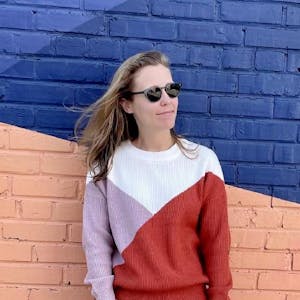I will walk through the process of my team introducing design system to our company's web applications that are built separately in different countries - UK, US, Germany, Spain and Japan. After that, I will add a practical guide to set up a design system for a project.
Introducing Design System to Multinational Web Apps
FAQ
The main goal of Octopus Energy's design system is to maintain a consistent brand identity across different countries, ensure high standards of accessibility, and provide a seamless developer experience by offering a component library built on design guidelines.
Octopus Energy ensures consistency in brand identity by using a design system that includes a component library with predefined LEGO blocks. These blocks are designed following specific guidelines to maintain uniformity in visual elements like logos, colors, and UI components across all regions.
Octopus Energy's component library is built using TypeScript and React. The library also incorporates Jest for testing components and Versal for fast deployment and collaboration. Additionally, they initially used Material UI for rapid development before creating their own styled components.
The design system at Octopus Energy includes accessibility best practices in each component. This ensures that all elements, such as navigation logos and UI components, are accessible, including features like aria labels and visually hidden text for screen readers.
At Octopus Energy, the design system is a set of guidelines and principles, acting as the instruction for building UI components. The component library, on the other hand, contains ready-made 'LEGO blocks' or components that developers can use directly. The design system encompasses the component library but is broader in scope.
Feedback is integrated through a dedicated channel within Slack where users of the component library can share feedback, requests, and bugs. This open-source, within-organization project encourages contributions from all users, facilitating continuous improvement and evolution of the design system.
Octopus Energy started their design system by establishing basic design principles, such as color palettes, typography, and spacing. These foundational elements provided a simple yet effective framework to begin standardizing design across their applications.
Video Summary and Transcription
Octopus Energy introduced design systems to address challenges in maintaining brand identity, accessibility, and developer experience. They built a component library using design guidelines and accessibility best practices, following Bradfrost's atomic design methodology. They used TypeScript, Jest, Versal, and Storybook for building and testing the library. The design system is an ongoing project that evolves with the product and business over time.
1. Introduction to Octopus Energy's Journey
Hi, I'm Allison. I'm a front-end developer from Octopus Energy in London. Today, I want to talk about Octopus Energy's journey in introducing design systems to multinational web apps. Octopus Energy was founded almost seven years ago now, and this time, we've gone from zero customers to over 3 million. As we were growing, and by this, I mean, in global scale, naturally, we faced some challenges. So we started working on the solution.
Hi, I'm Allison. I'm a front-end developer from Octopus Energy in London. Today, I want to talk about Octopus Energy's journey in introducing design systems to multinational web apps. Octopus Energy was founded almost seven years ago now, and this time, we've gone from zero customers to over 3 million. As we were growing, and by this, I mean, in global scale, naturally, we faced some challenges. So we started working on the solution. I want to share our journey in implementing the solution and the learning points from it. And if you have any questions along the way, please take a note or something, we'll have time at the end for the questions and answer.
2. Octopus Energy's Challenges and Solution
At Octopus Energy, we faced challenges in maintaining consistent brand identity, accessibility, and developer experience across different countries. To tackle this, we decided to build a component library using LEGO blocks, following design guidelines and accessibility best practices. This library will be shareable for our global developer teams as part of our design system, which contains our brand's design principles and guidelines for patterns.
At Octopus, we have a weekly get together for company updates and drinks in Friday afternoon, we call it Family Dinner. We were hearing some exciting news every month. Octopus Energy is expanding to new regions in the world, which then brought some interesting challenges too.
We ask these questions. How can we keep our brand identity consistent across different countries? How can we maintain accessibility to the highest standard? How can we support our engineer teams by providing a better developer experience? Well, nothing's better than some visual examples.
This is how Octopus Energy's main page landing area looks like in different countries. This is the UK, France, Italy, Spain, Japan, the US, Germany, and New Zealand. I can show you how our main navigation logo looks like behind the scenes in different countries. Some countries were using the logo with our mascot Constantine, the cute pink octopus you see there, and others were using the logo without it. This one got a simple A-tag wrapping an image. Another got a wrapping A-tag that has a span an image and you can see some accessibility practice here with area label and visually hidden text for screen reader. This one has a A-tag wrapping div that has another div with an image inside and an image tag. And you can see that this doesn't use any class names, whereas the previous ones were using some class names named with the convention of each engineer team's choice. This is only some of the examples of the code behind the UI, but you get the feeling of what's going on here. If the main logo comes with this many styles of code behind it, you can easily imagine how it will look like for different components and different pages.
We have set up some goals to tackle the challenges. We want consistent brand identity across the countries. We want to provide the great accessibility practice. We want to provide our global engineering team with a nice developer experience. What have we decided to achieve this? We decided to build LEGO blocks for developers. For them to build whatever they want easily with these LEGOs, while not having to worry about brand identity or anything. In other words, we decided to build a component library for our developers. This logo block will be made following our design guidelines. Each LEGO block will come with accessibility best practice. Also, it will be all typed, as TypeScript is our language of choice on top of React. In this LEGO blocks, the component library will be shareable for our developer teams around the world, as part of our design system. We started creating our design system along with building the component library. It contains our brand's design principles. It provides guidelines for the patterns. It is the source of truth on how to define what our apps should look like.
Check out more articles and videos
We constantly think of articles and videos that might spark Git people interest / skill us up or help building a stellar career
Workshops on related topic
Table of contents:
1 - The infamous "N+1" problem: Jonathan Baker - Let's talk about what it is, why it is a problem, and how Shopify handles it at scale across several GraphQL APIs.
2 - Contextualizing GraphQL APIs: Alex Ackerman - How and why we decided to use directives. I’ll share what directives are, which directives are available out of the box, and how to create custom directives.
3 - Faster GraphQL queries for mobile clients: Theo Ben Hassen - As your mobile app grows, so will your GraphQL queries. In this talk, I will go over diverse strategies to make your queries faster and more effective.
4 - Building tomorrow’s product today: Greg MacWilliam - How Shopify adopts future features in today’s code.
5 - Managing large APIs effectively: Rebecca Friedman - We have thousands of developers at Shopify. Let’s take a look at how we’re ensuring the quality and consistency of our GraphQL APIs with so many contributors.
We will enhance a full-stack JS application (Node.js backend + Vanilla JS frontend) to authenticate users with One Time Passwords (email) and OAuth, including:
- User authentication – Managing user interactions, returning session / refresh JWTs- Session management and validation – Storing the session securely for subsequent client requests, validating / refreshing sessions
At the end of the workshop, we will also touch on another approach to code authentication using frontend Descope Flows (drag-and-drop workflows), while keeping only session validation in the backend. With this, we will also show how easy it is to enable biometrics and other passwordless authentication methods.
CK 5 is a feature-rich framework and ecosystem of ready-to-use features targeting a wide range of use cases. It offers a cloud infrastructure to support the real-time collaboration system needs. During this workshop, you will learn how to set up and integrate CK 5. We will go over the very basics of embedding the editor on a page, through configuration, to enabling real-time collaboration features. Key learnings: How to embed, set up, and configure CK 5 to best fit a document editing system supporting real-time collaboration.
Table of contents:- Introduction to the CK 5 ecosystem.- Introduction to a “Notion-like” project template.- Embedding CK 5 on a page.- Basic CK 5 configuration.- Tuning up CK 5 for a specific use case.- Enabling real-time editing features.





























Comments